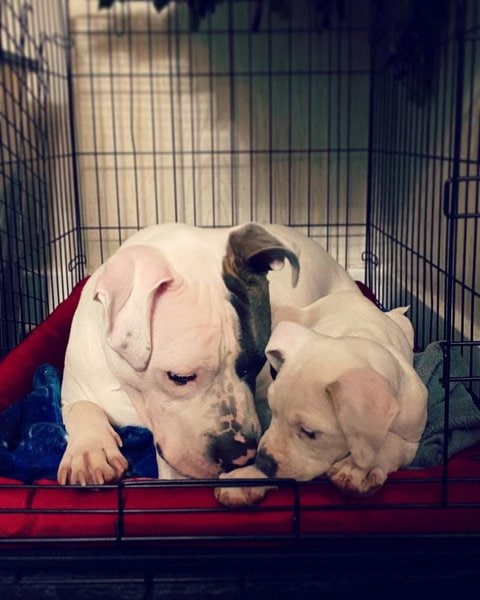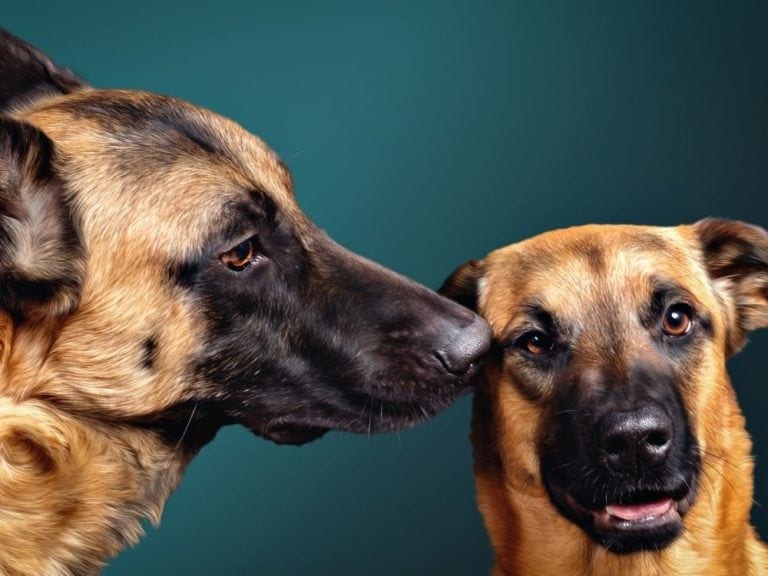While you are excited about adding a new dog to your home, it’s good to keep in mind that first time interactions between your old and new pooch do not always go as expected. To avoid any problems, you need to make the introduction the right way.
The key to introducing your dog to a new dog is to make the introduction on neutral territory and in a manner that is unlikely to be deemed as aggressive or competitive. If the initial meeting goes well, you can then make another introduction inside your home.
Much like it is with people, there are many dynamics that influence first time meetings between two dogs. When you bring a new dog to your home, your old dog could feel that your new dog is intruding on their territory, leading to aggression.
Introducing a new dog will also require that the two dogs work out issues like dominance and pecking order, sharing of resources, and so on. All these issues can sometimes lead to aggression, rather than the friendly introduction you were counting on.
In this article, we are going to share everything you need to know about introducing your dog to a new dog, including how to acclimate a new dog, whether it is okay to get a puppy when you have an older dog, what to do to get the older dog to accept the puppy, and how to introduce two dogs when one is aggressive.
We will also cover issues on how to reduce aggression between dogs, how to teach your dog to be friendly to other dogs, the don’ts of introducing two dogs, and how things like gender affect your decision to acquire a new dog.
To start off, let’s look at what you need to do when introducing a second dog to your home.
How Do You Introduce A Second Dog?
If you want to smoothly introduce a second dog to your home, you have to make the process as comfortable as you can for your resident dog. You don’t want your resident dog to view the newcomer as a threat.
To ensure a smooth introduction, here’s what you should do when you get a new dog…
Pick The New Dog Alone
When going to pick up your second dog, go alone, rather than allowing your resident dog to tag along. Allowing your current dog to tag along will minimize the options you have for controlling their first interaction.
In addition, having the two dogs with you on the drive back home means confining both of them in a small space, something that can easily set off the introduction on the wrong foot.
Make The Introduction In Neutral Territory
Your current dog views your home as their territory. Therefore, if you make the introduction at home, your resident dog will view the new dog as an intruder who wants a share of their territory.
To avoid this, the best thing to do is to make the introduction outside your home. Have a family member or friend who’s well known to your dog bring them out to a nearby street. Allow the two dogs to meet for a short interval and sniff each other out, then separate them and offer some treats separately.
Walk The Two Dogs
After the initial meeting, you and your friend or family member should then take the two dogs for a walk around the block, pausing every now and then and allowing the two dogs to have other short and supervised interactions, which should then be followed by some treats.
Bring The Dogs Home
If there are no signs of aggression between the two doggies, you can then walk them home and allow your resident dog to enter first. If they seem calm, you can let go of the leashes and allow them to interact under supervision. Keeping the leashes on makes it easy for you to quickly intervene should you see any signs of aggression.
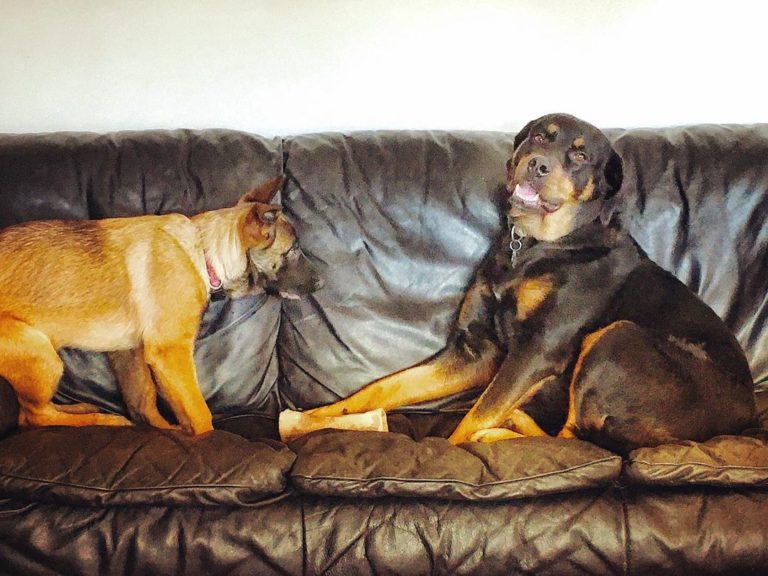
How Do You Acclimate A New Dog?
The key to acclimating a new dog is to ensure that there is no competition between your old dog and the new dog, or anything that could trigger tension between them.
Once you bring your second dog home, ensure that each dog has their own things. Each dog should have their own toys, their own sleeping area, and both of them should be fed in separate areas. This should be done while taking as much care as possible not to disrupt the routine of your resident dog.
After a few days or weeks, if you haven’t noticed any signs of aggression between the doggies, start leaving them together for short periods of time with close supervision. You can gradually increase the time they are together until you are comfortable with leaving them together unsupervised.
Once this happens, you can then start feeding the two dogs in the same area under supervision. However, never leave the two by themselves when food is available until you’re very certain that they’ve formed a good relationship with each other and are unlikely to fight for food.
During the acclimation period, ensure that your resident dog is keeping to their regular schedule, including meal times, playtime, going out for walks, and so on. As the two dogs get comfortable with each other, you can then start including both of them in activities.
How Long Does It Take For A Dog To Adjust To A New Dog?
The length of time it takes for your dog to adjust to having a new dog at home will depend on the personality of both dogs.
Some dogs will adjust to the new dog in a couple of days, while others could take a month or two to get comfortable with having another dog in what they considered to be their territory.
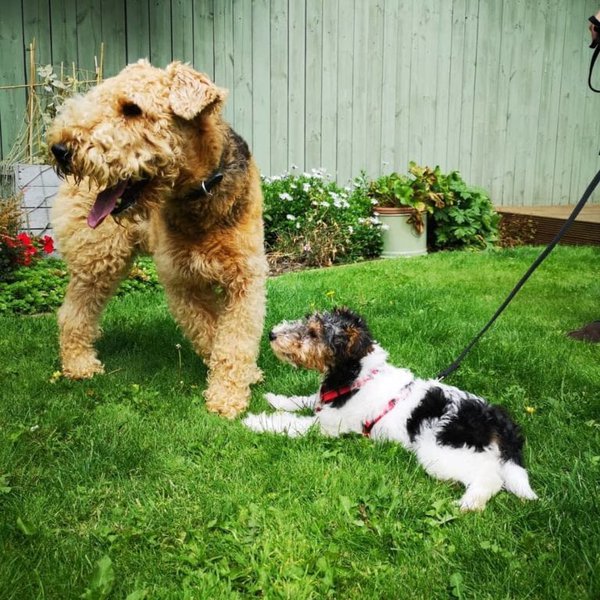
Is It Fair To Get A Puppy With An Old Dog?
There’s nothing wrong with getting a puppy with an old dog. Actually, the puppy can provide companionship for your old dog and make the old dog more active, thus increasing their overall health, happiness, and wellbeing.
That said, there are some other concerns that you need to keep in mind when getting a puppy when you already have an old dog. These include…
Do Old Dogs Get Jealous Of New Puppies?
After getting a new puppy, most people will obsess over the puppy for the first few days and forget about their older dog. This can easily make your dog feel jealous, and can affect their ability to bond well with the new puppy.
To avoid this, don’t neglect your older dog after getting a puppy. Actually, giving attention to the older dog before the puppy will show them that they are still the head of the pack, which will make them more willing to accept the puppy.
What Is The Best Age Gap Between Dogs?
The best time to introduce a new puppy is when your resident dog is about 2 to 3 years of age. By this age, the resident dog will already have completed their training and comfortably settled in your home. However, they are still young and energetic enough to entertain play with the new puppy.
Will An Older Dog Hurt A Puppy?
Puppies are yet to learn the social norms of canine interaction, so they will sometimes irk the older dog. This can lead to some growling and snapping from the older dog in an attempt to warn the puppy that their behavior is not welcome. However, it is very unlikely that your older dog will hurt your puppy.
It is even more unlikely for an older dog to kill a puppy, though there are a few instances where this has happened. If you see any excessive aggression from your older dog towards your puppy, the best thing to do is to separate the dogs.
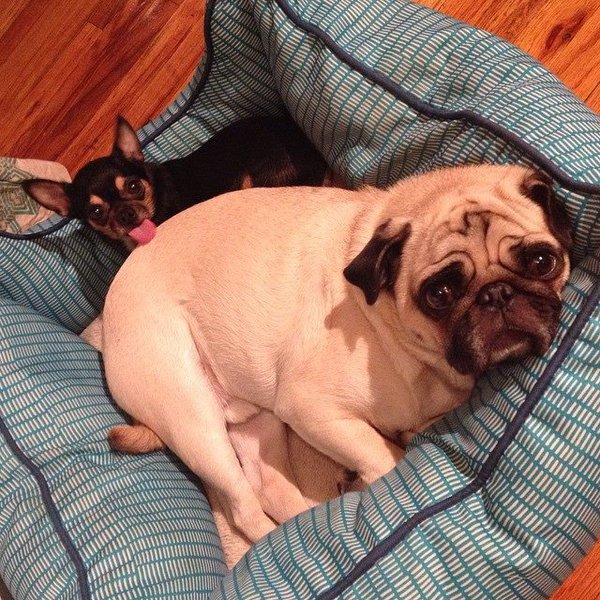
How Do You Get An Old Dog To Accept A New Dog?
If you want an old dog to accept a new dog, you have to make sure that the introduction of the puppy does not greatly affect the life and routine of the older dog.
Most dogs will not have problems with the introduction of a new puppy, but sometimes, your dog could show aggression towards the puppy if they feel anxious, or if they feel that the puppy is taking their place.
So, how do you get your older dog to stop attacking my new puppy? Doing the following things will help your older dog to accept a new puppy.
Give More Attention To The Older Dog
While having a new puppy is an exciting feeling, don’t focus too much on the puppy and forget your other dog. If you want your other dog to accept the puppy, give them as much attention as you used to before the puppy arrived. Greet the older dog first, feed them first, and allow them outside before the puppy. This will show them that the puppy is the underling.
Maintain The Older Dog’s Routine
After bringing home the puppy, don’t make any changes to the other dog’s routine. Feed them at the same time they are used to, take them for walks on schedule, and so on. Changes in routine can cause anxiety in dogs, which could cause the older dog to take out their stress on the puppy.
Train The Puppy To Control Themselves
Puppies are highly energetic and will want to rampage all over the place. However, their overexcitement can be too much for your older dog, so you need to teach the puppy to remain calm. This calm demeanor will make it easier for your other dog to get comfortable with the puppy.
Should I Let My Older Dog Growl At My Puppy?
There is nothing wrong with your older dog growling at your puppy. This is how your older dog teaches the puppy what is acceptable behavior and what is not. You should only intervene when the growling turns into full blown aggression.
How Long Does It Take An Older Dog To Get Used To A Puppy?
This will depend on the personality of the older dog, how good you are at acclimating the puppy, and how fast the puppy learns social behavior. Therefore, getting used to a puppy can take your older dog anywhere from a few days to several weeks.
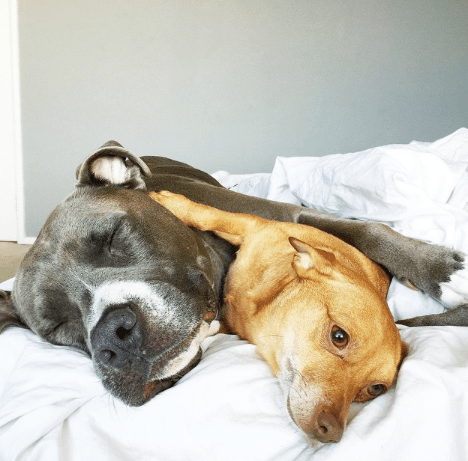
How Do You Introduce Two Dogs When One Is Aggressive?
If one of your dogs is aggressive, the key to successfully introducing a new dog is to put the needs of your aggressive dog first. You don’t want to give them any reason to get aggressive towards the other dog.
Keep in mind that introducing a new dog to an aggressive dog will need lots of time and patience. Here’s what you need to do when it comes to introducing a new dog to your aggressive dog…
- Make sure that each dog is on a leash before making the introduction, and make the introduction on neutral territory.
- Instead of bringing the two dogs towards each other directly, have the dogs approach each other from the side. A direct approach can be interpreted as a threatening sign.
- If they start showing signs of aggression, use objects on the street, such as hedges and parked cars, to create a barrier between them until they relax.
- If the dogs react calmly towards each other, allow the aggressive dog to approach the other dog for a short interaction. Separate them after a short while and offer a treat to both of them.
- Avoid using punishment even when one dog shows signs of aggression, since this will condition the dog to believe that sight of the other dog leads to punishment.
- Keep bringing them together for brief interactions, then separating them again and offering a treat until the aggressive dog stops viewing the other dog as a threat.
- Sometimes, you’ll need to repeat this process over a couple of days or weeks before your aggressive dog stops showing aggression towards the other dog.
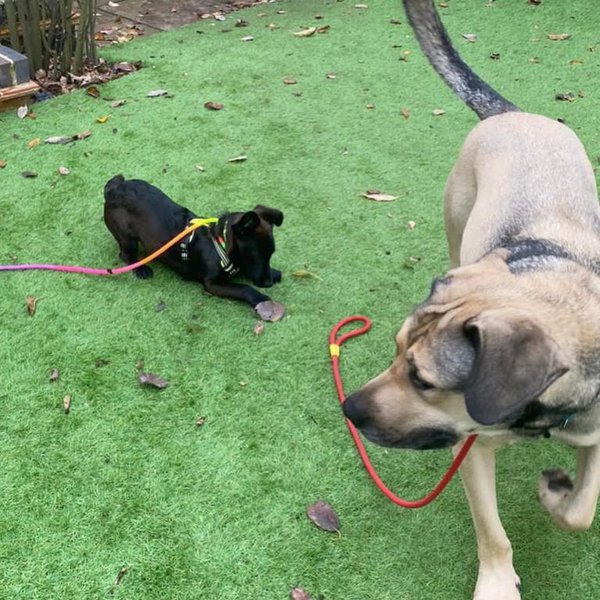
How Do I Stop My Dog Attacking My Other Dog?
If your dog is constantly trying to attack your new dog, the best way to stop this behavior is to find and remove the triggers for the aggression, and then carefully reintroduce the two dogs.
It’s very unlikely that your resident dog will attack your new dog for no reason. Attacks happen because one dog views the other as some sort of threat. Here’s what you need to do if your dog seems intent on attacking your other dog.
Remove The Trigger
Some reasons why your dog will attack your other dog include:
- Your dog is anxious because their routine has been changed.
- Your new dog has food, a toy, or a treat that your other dog wants.
- Your new dog is encroaching on your other dog’s spot.
- Your dog is not getting enough exercise.
There are many other reasons that could make your dog turn to aggression. To stop the aggression, you have to identify and remove the trigger.
For instance, if your dog is getting aggressive because of a toy, make sure each dog has their own toys and keep them separate when they’re playing with their toys. Similarly, if your dog is getting aggressive at meal times, avoid feeding the two dogs in the same area.
Carefully Reintroduce Them
After an instance of aggression, you should separate your two dogs for a couple of days, and then carefully reintroduce them after making sure that you have eliminated the triggers of aggression. Reintroduce the two dogs as if they’re meeting each other for the first time.
Avoid Punishment
Sometimes, you could be tempted to punish your dog after they attack your other dog. However, punishment only leads to more aggressive behavior, so it should be avoided completely.
Instead, you should separate the two dogs, wait for a couple days, and then try to reintroduce them, giving treats if they react calmly towards each other.
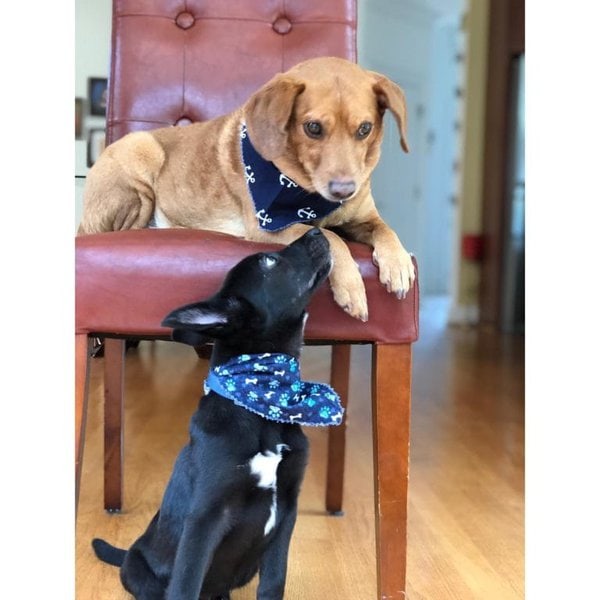
How Do I Teach My Dog To Be Friendly With Other Dogs?
Some of the things you can do to get your canine buddy to be friendly with other dogs include using classical conditioning to teach your dog to be friendly to other dogs, taking your dog to dog classes, and practicing positive reinforcement.
Using Classical Conditioning
Like Pavlov managed to teach his dogs to salivate at the ring of a bell, you can also use classical conditioning to teach your dog to see encounters with other dogs as a pleasurable experience.
To do this, carry some special treats with you whenever you take your dog out for a walk, and every time you encounter another dog, stop and give the treats at the exact moment when your dog sees the other dog. These special treats should only be given during these moments.
With time, your dog will start associating the sight of another dog with treats, and instead of getting fearful and wary, they’ll start looking forward to seeing other dogs.
Take Your Dog To Dog Classes
Taking your pooch to dog classes is a great way to socialize your dog and get them used to being around other unfamiliar dogs.
The beauty of dog classes is that the interaction between your dog and other dogs happens in a controlled environment where aggression is unlikely to play out. With time, your dog will learn to be comfortable and friendly towards other dogs.
Practice Positive Reinforcement
Always opt for positive reinforcement over punishment when training your dog to do anything. Punishing your dog will only make them fearful, which will lead to more likelihood of aggression. To avoid this, only use positive reinforcement to train your dog.

What Should You Not Do When Introducing A Dog?
One of the things you should never do when introducing two dogs is to introduce the dogs inside your home. Your resident dog will see this as an intrusion on their territory, thus starting the introduction on the wrong footing.
Other things you should avoid doing when introducing two dogs include:
- Don’t make the introduction without a leash. This makes it impossible to control the dogs in case the situation turns aggressive.
- Don’t have the dogs approach each other directly. Both dogs will see this as a setup for confrontation, thus increasing the chances of aggression.
- As much as you’re excited about your two dogs becoming friends, don’t force interactions between them. It’ll take time for your dogs to get comfortable around each other, so give them this time rather than forcing them to play and interact with each other from the get go.
- Never leave food out when making an introduction between two dogs. The resident dog will only see competition for their food, which will make them confrontational.
- Never leave the two dogs without supervision until the two dogs have grown comfortable being around each other. This can take anywhere between several days to several weeks.
- Don’t force your two dogs to share meals and toys, since this will only lead to competition for these important resources and confrontation.
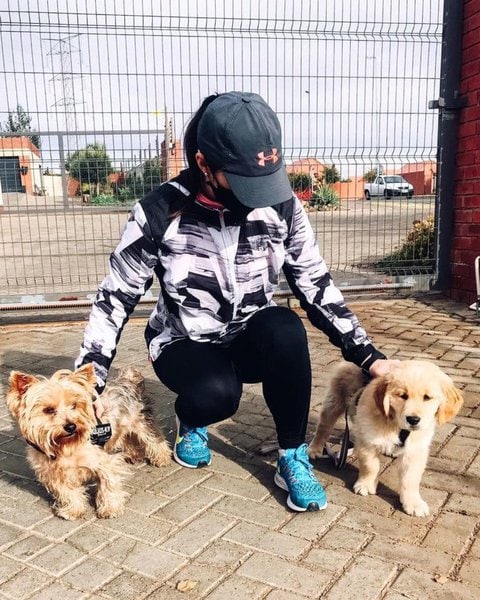
Does Gender Matter When Adopting A Second Dog?
Gender is an important consideration when it comes to adopting a second dog. Ideally, when getting a second dog, go for the opposite gender from your first dog.
Gender plays a lot of influence in relationships between dogs. Every dog pack usually has an alpha male and an alpha female. If both your dogs are of the same gender, they’ll be competing for the same position. This rivalry can make it harder for the two dogs to get along well.
For instance, male dogs get along better with female dogs because both of them know their position in the pack. However, when it’s two males, they’ll both want to lead the pack, especially if both are around the same age. This can lead to fighting as they try to determine who between them deserves the top position.
That said, it’s good to note that this is not something that is cast in stone. It is possible for two male or female dogs to live together without any squabbles.
However, since you can’t predict whether your dogs will coexist peacefully or fight for dominance, it is best to get a second dog of the opposite gender.
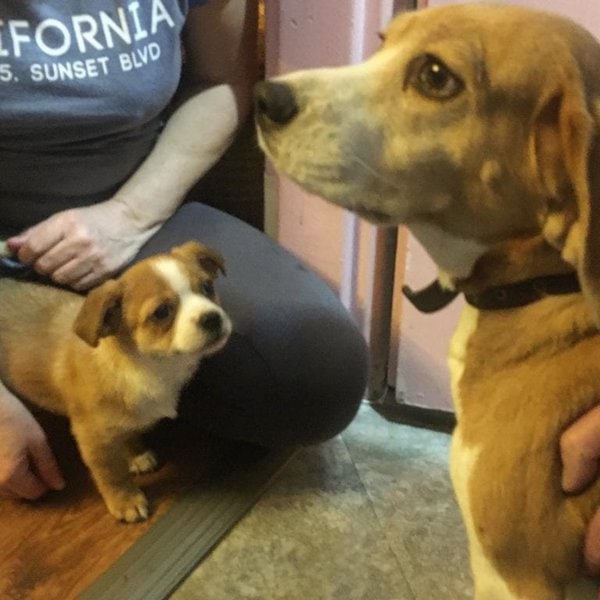
Should I Get A Second Dog To Keep My Dog Company?
Dogs are social animals that thrive in packs and feel lonely when alone. Some dogs prefer to live with humans than with another dog, but most won’t have an issue with having another dog companion.
Therefore, it is a good idea to get a second dog to keep your dog company, especially when you don’t spend a lot of time at home.
Some of the benefits of getting a second dog include…
Companionship
When you have only one dog and you don’t spend much time at home during the day, your dog will spend most of their days feeling bored and lonely. Sometimes, this can even lead to separation anxiety.
Getting a second dog will provide your dog with the companionship they are craving and reduce the likelihood of your dog becoming anxious.
Considering that anxiety sometimes leads to destructive behavior, such as chewing and scratching, getting a second dog can even save you from such destruction.
Keeping Each Other Active
Dogs require lots of exercise for their physical and mental wellbeing. Sometimes, however, you might not be available all the time to give your canine buddy all the exercise they need.
When you have a second dog, your two dogs will spend a lot of time playing with each other and chasing each other all over the yard. This higher level of activity ensures that your dogs get all the exercise they need, without any additional effort on your part.
Puppy Training Becomes Easier
Finally, when you get a puppy when you already have another dog, training the new puppy becomes a lot easier. This is because the puppy has the opportunity to learn from the older dog.
For instance, if your older dog always goes out when they need to use the potty, your puppy will quickly learn that there is a designated potty spot, and it is not inside the house.
Similarly, by seeing your older dog reacting in a certain way to specific commands, it will be a lot easier for the puppy to learn these commands as well.
